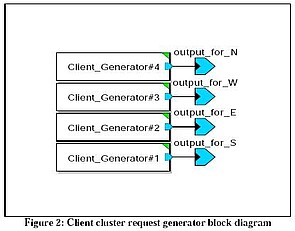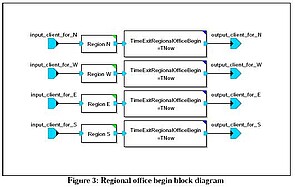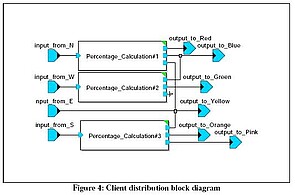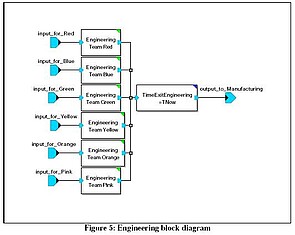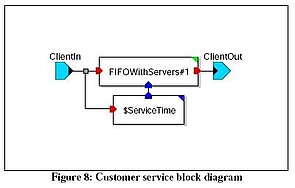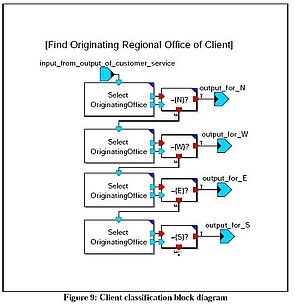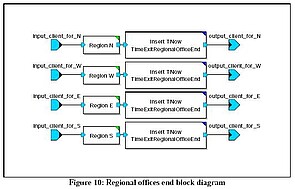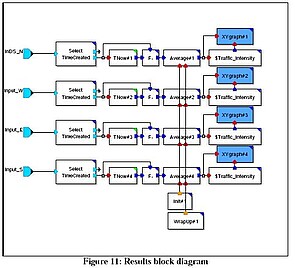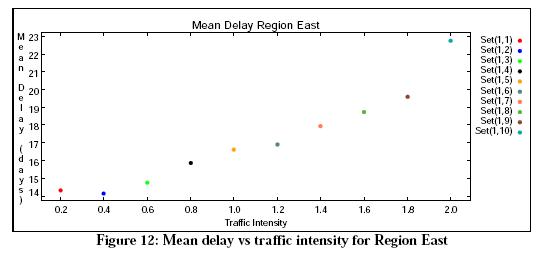Mainnavigation
Subnavigation
BORDER
Pagecontent
- You are here:
- Home »
- MLDesigner »
- Examples »
- Process Applications »
- Multi Queue - Multi Server Model
A Multi Queue Multi Server Model
Modeling and analysis of trouble reporting and resolution system
The objective of this model is to simulate the behavior of a trouble reporting system. The system consists of four regional offices (North, South, East, West) that receive calls from customers. The percentage of calls that actually represent problems is set by a single parameter. The regional offices assign problems to one of six engineering teams (Red, Blue, Green, Yellow, Orange, Pink) depending on the type of problem. Once the engineering team as resolved the problem, a report is sent to the system test group in Manufacturing.The System test group verifies the solution and passes the solution to Customer Service. Customer service returns the solution back to the regional offices. The regional offices correct the problems on the next customer visit.
The top-level block diagram is shown below (Fig.1). The cluster client generator (Fig.2 ) consists of four identical client request generators.
The Client Offices Begin block is responsible for receiving service requests, processing them, and passing them to (via the Client Distribution block) to engineering for resolution. Service request processing time is set by parameter for each office.
The Client Distribution block decides (based on parameters) which requests from the Regional Offices go to which Engineering teams.


